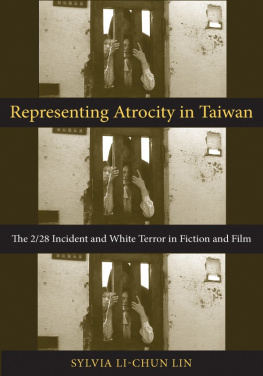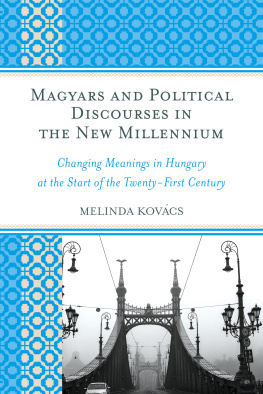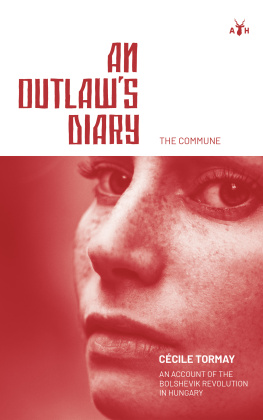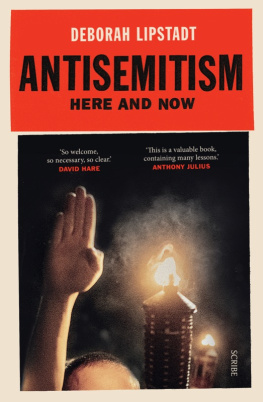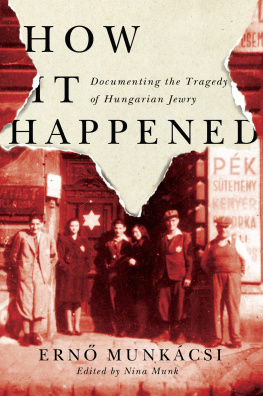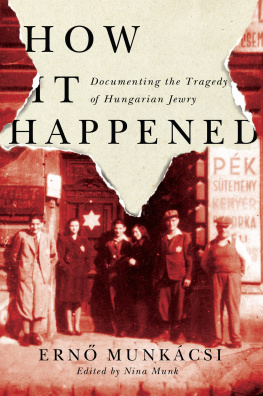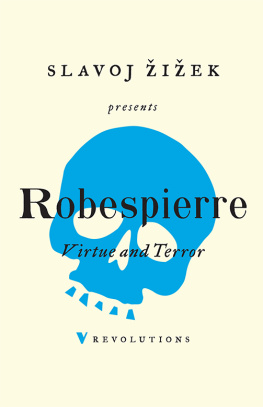The White Terror
The White Terror was a movement of right-wing militias that for two years actively tracked down, tortured, and murdered members of the Jewish community, as well as former supporters of the short-lived Council Republic in the years following the First World War. It can be argued that this example of a program of virulent antisemitism laid the foundations for Hungarian participation in the Holocaust.
Given the rightward shift of Hungarian politics today, this book has a particular resonance in re-examining the social and historical context of the White Terror.
Bla Bod is Professor of East European History at the University of Bonn. He is the author of Tiszazug: The Social History of a Murder Epidemic.

Mass Violence in Modern History
Edited by Alexander Korb and Uur mit ngor
1. Knowledge and Acknowledgement in the Politics of Memory of the Armenian Genocide
Vahagn Avedian
2. Local Dimensions of the Second World War in Southeastern Europe
Edited by Xavier Bougarel, Hannes Grandits and Marija Vulsica
3. TheWhite Terror: Antisemitic and Political Violence in Hungary, 19191921
Bla Bod
4. The Holocaust in the Romanian Borderlands: The Arc of Civilian Complicity
Mihai I. Poliec
First published 2019
by Routledge
2 Park Square, Milton Park, Abingdon, Oxon OX14 4RN
and by Routledge
52 Vanderbilt Avenue, New York, NY 10017
Routledge is an imprint of the Taylor & Francis Group, an informa business
2019 Bla Bod
The right of Bla Bod to be identified as author of this work has been asserted by him in accordance with sections 77 and 78 of the Copyright, Designs and Patents Act 1988.
All rights reserved. No part of this book may be reprinted or reproduced or utilised in any form or by any electronic, mechanical, or other means, now known or hereafter invented, including photocopying and recording, or in any information storage or retrieval system, without permission in writing from the publishers.
Trademark notice: Product or corporate names may be trademarks or registered trademarks, and are used only for identification and explanation without intent to infringe.
British Library Cataloguing-in-Publication Data
A catalogue record for this book is available from the British Library
Library of Congress Cataloging-in-Publication Data
Names: Bodo, Bela, author.
Title: The White Terror : antisemitic and political violence in Hungary, 1919-1921 / Bela Bodo.
Description: Abingdon, Oxon; New York, NY : Routledge, 2019. | Series: Mass violence in modern history ; 3 | Includes bibliographical references and index.
Identifiers: LCCN 2018058227| ISBN 9781138579521 (hardback) | ISBN 9780429507960 (ebook) | ISBN 9780429018916 (adobe) | ISBN 9780429018893 (mobi) | ISBN 9780429018909 (epub)Subjects: LCSH: Jews--Persecutions--Hungary--History--20th century. | Antisemitism--Hungary--History--20th century. | Political violence--Hungary--History--20th century. | Terrorism--Hungary--History--20th century. | Right-wing extremists--Hungary--History--20th century. | Militia movements--Hungary--History--20th century. | Hungary--Politics and government--1918-1945. | Hungary--Ethnic relations--History--20th century.
Classification: LCC DS135.H9 B63 2019 | DDC 305.892/4043909042--dc23
LC record available at https://lccn.loc.gov/2018058227
ISBN: 978-1-138-57952-1 (hbk)
ISBN: 978-0-429-50796-0 (ebk)
Historical research is a communal enterprise. This book would not have been possible without the support and encouragement of friends, colleagues and institutions. Two summer research grants from Missouri State University, where I was an associate professor until 2015, made possible visits to three Hungarian archives in the summers of 2011 and 2012. The time spent in Jena, Germany, as a fellow of the Imre Kertesz Kolleg Jena, was, after graduate school, one of the most intellectually rewarding periods of my life. Freed from teaching duties, I was able to devote my time fully to research and writing. As a scholar, I profited immensely from the weekly group discussions and the informal daily conversations with colleagues about a wide range of issues in East Central European and German history. These discussions also had an impact on the way in which I began to think and write about violence after the First World War. Over the years, Robert Gerwarth, Rudolf Kuera, Ota Konrad, Paul Newman, Jochen Bhler, Paul Hanebrink, Alice Freifeld and Nandor Dreisziger read chapters or commented on early versions in article form. I have had frequent discussions with Gyrgy Pteri about the memory of the White Terror; exchanged views with Emily Gioielli on violence against women during the counterrevolution; talked at length with Judith Szapor about right-wing female activists, such as Ccil Tormay; and shared ideas with Zsombor Bdy on right radical intellectuals, such as Dezs Szab, one of the chief ideologists of the counterrevolution. In the early stages of research, Ignc Romsics drew my attention to files of the Legal Aid Office of the Social Democratic Party deposited in the Archives of Political History and of Trade Unions, which deals with the White Terror. I have corresponded with the archivist Tams Kovcs, who is also an expert on police violence after the First World War, about prisons and internment camps in Hungary after August 1919. I am grateful for the help of the staff of the National Archive of Hungary, the Military History Institute Archive, the Historical Archives of the Hungarian State Security, the Photo Archives of the Hungarian National Museum, the Archives of Political History and of Trade Unions and the Budapest City Archive. I would like to extend my special thanks to Zsuzsanna Toronyi, the Director, of the Hungarian Jewish Archives, with whom I had the chance to discuss the topic research in its early stages.
Editing of the many revisions of a book manuscript and preparing its final form are, as well, a group effort. My friend Curtis Richardson read most of the chapters and gave excellent advice on comparisons in Russian history. Richard Esbenschade and Zsuzsa Gille read each chapter and helped to do final edits of the manuscript in the last weeks before submission to publisher. I received much support, as well, from Martin Grosch and Luigi Pinchetti, who produced the fine maps in the book, and Lauren Erker, who assembled the index and bibliography. My wife, Bethany Walker, an archeologist and historian at the University of Bonn, patiently read every revision of every chapter; helped to correct my grammar, style, and argumentation; found me cartographic support; and assisted with the myriad administrative tasks related to assembling the manuscript. I am deeply indebted to her support for this monograph project over the last several years.
This book grew out of an interest in post-war societies, social and moral crises, right-wing radicalism, crimes and political violence. In some ways, it is a continuation of my first book, Tiszazug: A Social History of a Murder Epidemic (2002), which, though a single eventthe poisoning of more than 50 individuals in a remote agrarian region of the country in the final phase and in the immediate aftermath of the wardealt with peasant society and domestic violence in Hungary after 1918. This book, too, is about violence, but violence that transcends class and cultural boundaries and involves war veterans as perpetrators rather than victims, as they were in the Tiszazug poisonings. Like the book on peasant culture, this study also has a personal dimension. Both of my grandfathers served in the First World War; my maternal grandfather even had the chance, or misfortune, to serve in the Second World War. Several of my close and distant relatives were soldiers in the Second World War: one came home from the Soviet Gulag only in the early 1950s. My uncle fought in the Revolution of 1956 and was forced to flee the country after its defeat. The oft-repeated argument in this book about the brutalization of soldiers and civilians in wars, revolutions and oppressive regimes was more than an abstract theory. Growing up in a peasant family in Szamosszeg, a village close to the Ukrainian border, in the 1960s and 1970s, I witnessed and was forced to live with, without recognizing them for what they were, the long-term effects of the wars on individuals and families. It would be an exaggeration to say that I was raised by war veterans, because adult men generally did not concern themselves with child-raising. However, as children, we eagerly listened to their stories told in the close circles of like-minded friends and reliable family members (which did not prevent the state from keeping a file on my paternal grandfather until his death). The Emperor Franz Joseph (Ferenc Jzska), Prime Minister Istvn Tisza (Tisza Pista) and Regent Mikls Horthy (Horthy Miki) were household names. The fight between the Reds and Whites in 1919, too, was periodically reenacted between my paternal grandfather, who remained a fan of Horthy until his death, and his first cousin and best friend, and Communist of the first hour in the spring of 1919. Their last ritualized quarrel took place two days before my grandfathers death on the Christmas of 1977which ended with the two tall and elderly men (both in their early eighties at the time) falling asleep together on my grandfathers sofa. It was a touching and exceptional scene: unfortunately, political conflicts in Hungary normally ended differently, with one of both parties landing in prison, executed, or forced into exile.



